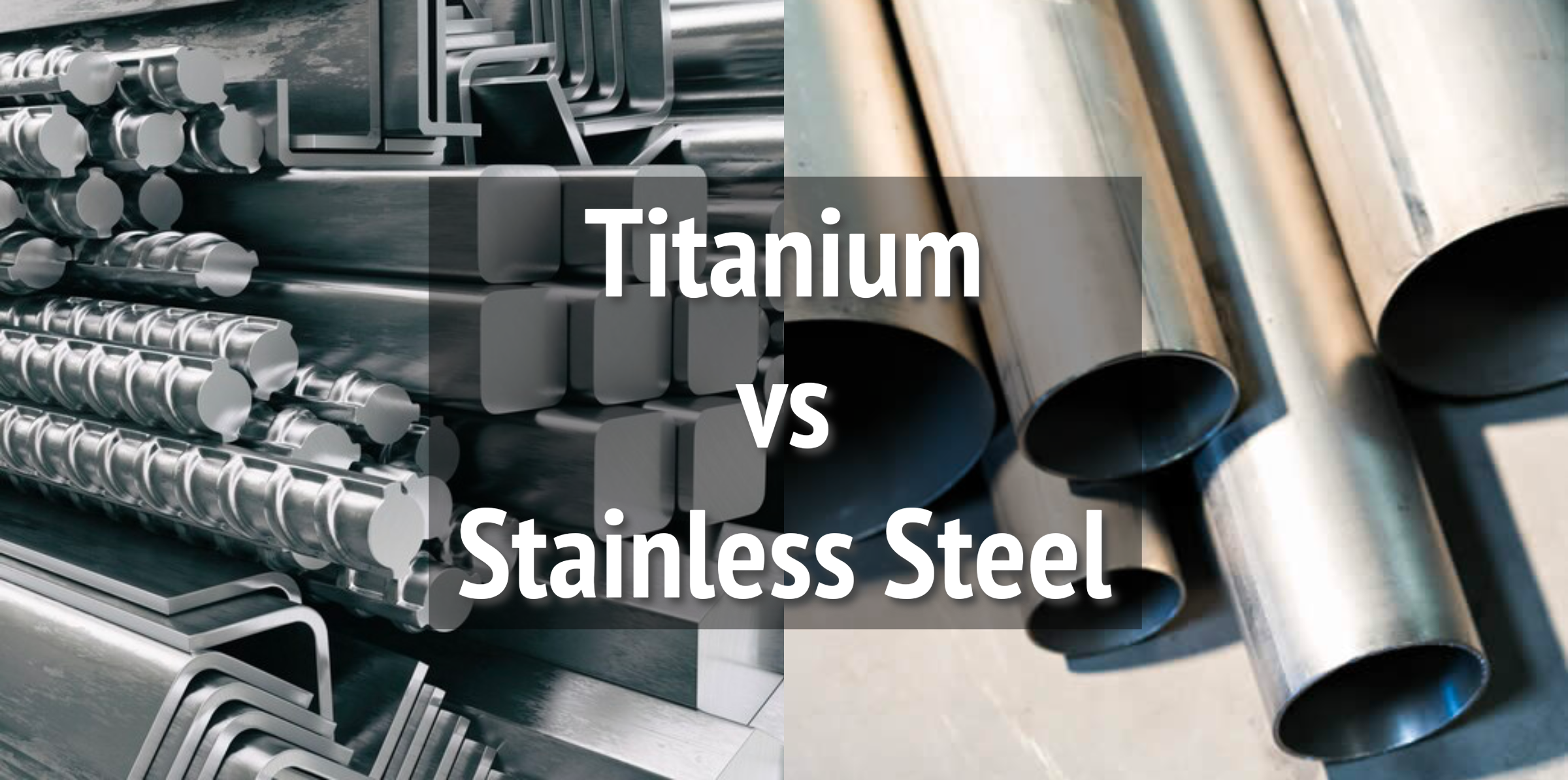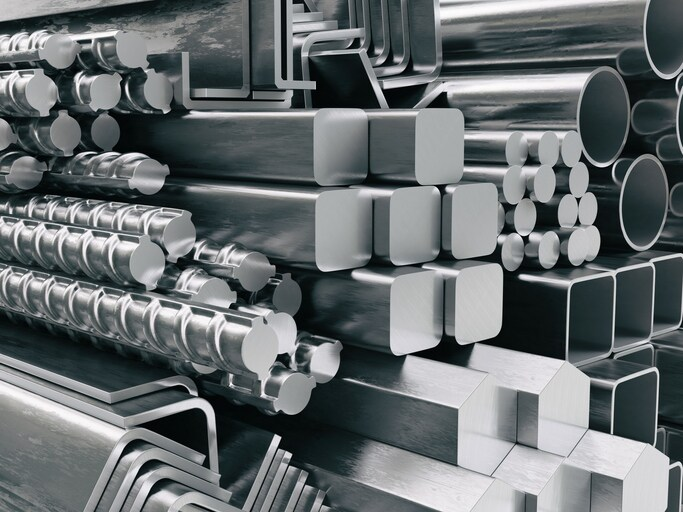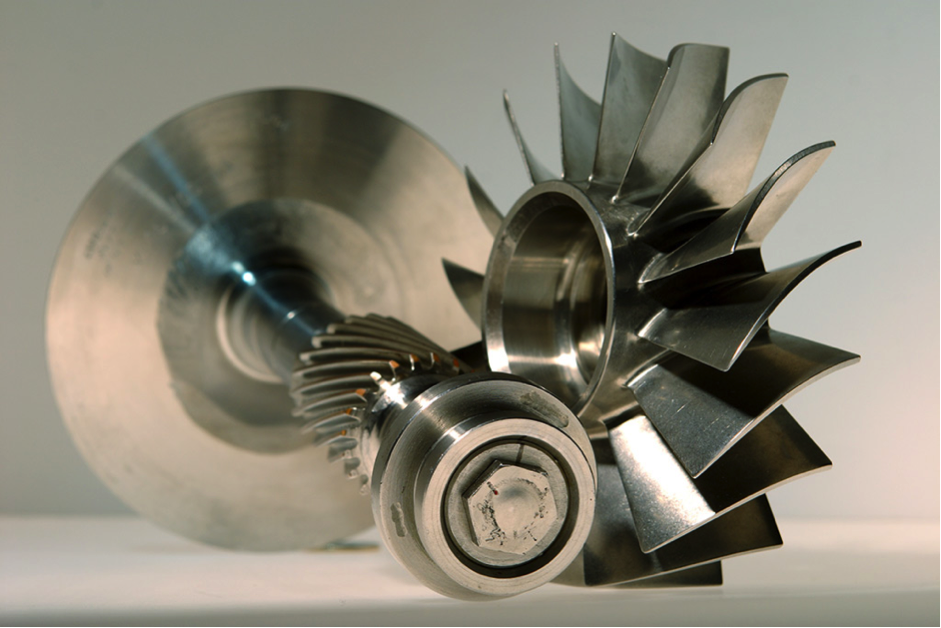Titanium vs Stainless Steel: Which Metal is Best for Your Needs?

Titanium and stainless steel are two popular metal options. But which one is better for your project?
Introduction
When choosing a metal for your next design or build, titanium and stainless steel are two options often at the forefront. But which is best suited to your needs?
This article compares the two metals in a simple way. Whether your priorities are minimizing weight, maximizing corrosion resistance or optimizing strength, we'll explore where each material exceeds—and where trade-offs occur.
Titanium vs. Stainless Steel: Properties
Property | Titanium (Grade 2) | Titanium Alloy (Ti-6Al-4V) | Stainless Steel (304/316) |
|---|---|---|---|
Strength | Moderate (275–450 MPa) | High (Up to 1,100 MPa) | Moderate (520–620 MPa) |
Weight | Light (4.5 g/cm³) | Light (4.43 g/cm³) | Heavy (7.8 g/cm³) |
Strength-to-Weight Ratio | Good | Exceptional | Much lower than titanium |
Corrosion Resistance | Excellent | Excellent | Good (better in 316) |
Machinability | More challenging | Challenging | Easier |
Heat Resistance | Up to 600°C | Up to 800°C | Up to 800–900°C |
Cost | High | Very High | Lower |
Conclusion
Titanium is ideal for applications where lightweight, corrosion resistance, and moderate strength are key factors.
Titanium Alloys provide enhanced strength and durability, making them perfect for high-performance applications like aerospace and medical fields.
Stainless Steel offers a balance of strength, corrosion resistance, and affordability, making it the most versatile and commonly used material in everyday applications.
Below is a comprehensive breakdown:
Composition Comparison
Titanium (Grade 2)
Pure titanium contains about 99.5% titanium with trace amounts of iron, oxygen, and carbon. It is known for its excellent corrosion resistance and high strength-to-weight ratio.
Titanium Alloys (e.g., Ti-6Al-4V)
Titanium alloys are a mix of titanium with other elements like aluminum, vanadium, and sometimes molybdenum.
Ti-6Al-4V (Grade 5) is the most common alloy, containing 90% titanium, 6% aluminum, and 4% vanadium. Alloys offer improved strength, toughness, and workability compared to pure titanium.
Stainless Steel (304, 316)
Stainless steel is primarily composed of iron, chromium (at least 10.5%), and carbon, with possible additions like nickel and molybdenum.
Chromium gives stainless steel its corrosion resistance, while nickel and molybdenum enhance this property and improve its strength and toughness.
Strength and Weight

Stainless steel bars and tubes.
Titanium
Pure titanium has a lower tensile strength (around 275–450 MPa) than titanium alloys but is still stronger than many metals given its light weight.
It has a density of 4.5 g/cm³, which is about 45% lighter than stainless steel, making it ideal for applications requiring lightweight materials.
Titanium Alloys
Titanium alloys like Ti-6Al-4V have a tensile strength of up to 1,100 MPa, making them much stronger than pure titanium and suitable for high-performance applications, including aerospace and medical implants.
Titanium alloys share the same lightweight properties as pure titanium, with a similar density (4.43 g/cm³). Their strength-to-weight ratio is even higher than that of pure titanium.
Stainless Steel
Stainless steel varies in strength depending on the grade. Common stainless steel types like 304 have a tensile strength of around 520 MPa, while more specialized types like 316 have tensile strengths up to 620 MPa.
It is heavier but offers excellent toughness and the ability to withstand high mechanical stress.
Stainless steel also denser, with a density of around 7.8 g/cm³. It is much heavier than both pure titanium and its alloys, which can be a disadvantage when weight reduction is critical.
Corrosion/Heat Resistance
Titanium
Titanium is highly resistant to corrosion, especially in extreme environments such as seawater, chlorides, and acids. It forms a natural oxide layer that protects it from rust and degradation.
It can withstand temperatures of up to 600°C (1,112°F) before losing its strength, making it ideal for high-temperature environments.
Titanium Alloys
Titanium alloys maintain excellent corrosion resistance, though pure titanium is generally better in highly corrosive environments. Alloys, however, offer better mechanical performance where strength is also a priority.
Titanium alloys generally perform better at higher temperatures than pure titanium. Alloys like Ti-6Al-4V can handle up to 800°C (1,472°F) without significant loss of mechanical properties.
Stainless Steel
Stainless steel has good corrosion resistance due to its chromium content, but it can corrode in highly acidic or salty environments, especially if not a high-grade type like 316, which is marine-grade.
It can handle temperatures up to 800–900°C (1,472–1,652°F) depending on the grade, making it a good choice for high-heat applications like kitchen appliances, engine parts, and exhaust systems.
Workability and Machinability
Titanium
Pure titanium is relatively difficult to machine due to its toughness and tendency to gall, but it is more formable than its alloys.
Titanium Alloys
Titanium alloys are harder to machine than pure titanium due to their higher strength. Special tools and techniques are needed for manufacturing, which can increase production costs.
Stainless Steel
Stainless steel is easier to machine and weld than titanium and its alloys, though it may still require specific tools to prevent tool wear.
Titanium vs. Stainless Steel: Applications
The unique properties of titanium and stainless steel make them suitable for a wide range of applications, each excelling in specific areas:
Titanium

Titanium
Chemical Processing Equipment: Pure titanium is widely used in industries that need high corrosion resistance and low weight, such as chemical processing.
Medical Implants: Titanium's biocompatibility makes it the material of choice for bone screws, joint replacements, dental implants, and other medical devices that need to integrate seamlessly with the human body.
Luxury Goods: Due to its unique combination of strength, lightness, and aesthetics, titanium and its alloys are used in high-end watches, jewelry, and other luxury items.
Titanium Alloys
Aerospace: Due to its exceptional strength-to-weight ratio and excellent corrosion resistance, titanium alloy is extensively used in aircraft frames, jet engine components, and landing gear.
High-Performance Sporting Goods: The lightweight nature and strength of titanium make it ideal for golf clubs, bicycle frames, and other sporting equipment where weight reduction and durability are crucial.
Stainless Steel
Construction: The combination of affordability, strength, and corrosion resistance makes stainless steel a popular choice for building materials, architectural elements, and structural components.
Appliances: Its durability and resistance to rust and wear and tear make stainless steel ideal for kitchen appliances, washing machines, and other household items.
Medical Instruments: While not ideal for implants due to biocompatibility concerns, stainless steel is widely used in surgical instruments, medical devices, and sterilization equipment due to its durability and resistance to corrosion.
This list highlights some of the most common applications, but the versatility of both materials extends beyond these examples.
Cost and Availability
When choosing between titanium and stainless steel, cost and availability are crucial factors to consider.
Cost
Titanium - expensive due to its complex extraction process and the difficulty in manufacturing it. Pure titanium is generally more affordable than titanium alloys but still pricier than stainless steel.
Titanium Alloys - even more expensive than pure titanium due to the added alloying elements and the specialized processes required to work with them.
Stainless Steel - significantly cheaper than titanium and titanium alloys. Its wide availability and ease of production make it the more cost-effective option for most applications, except when weight reduction or extreme performance is required.
Availability
Stainless Steel: Widely available in various forms like sheets, tubes, bars, and wires due to its high demand and established production methods.
Titanium and Titanium Alloys: Less readily available compared to stainless steel, and the specific shapes and sizes may require longer lead times or higher costs.
Additional Considerations:
Machinability: As mentioned earlier, titanium is more challenging and expensive to machine compared to stainless steel. This can further add to the overall cost of titanium products.
Fabrication: Specialized techniques and equipment are often needed to work with titanium, which can contribute to higher fabrication costs.
Sustainability and Environmental Impact

Photo Credit: Valor Kopeny at Unsplash
While the discussion of titanium and stainless steel often focuses on their properties and applications, their environmental impact is becoming increasingly important. Determining the "more sustainable" option requires a nuanced understanding of their lifecycle stages.
Material Extraction
Titanium: Extracting titanium ore is an energy-intensive process requiring high temperatures and specialized equipment. Additionally, titanium ores are often located in ecologically sensitive areas, raising concerns about potential environmental damage during mining.
Stainless Steel: The primary material in stainless steel, iron, is readily available, making its extraction less energy-intensive compared to titanium. However, extracting other elements like chromium and nickel can have environmental consequences, including air and water pollution.
Processing and Manufacturing
Titanium: Processing titanium ore into usable metal involves complex steps and significant energy consumption. This contributes to a higher carbon footprint compared to stainless steel.
Stainless Steel: The manufacturing process for stainless steel is relatively well-established and requires less energy compared to titanium. However, it still generates emissions and contributes to environmental impacts.
Recycling
Both titanium and stainless steel are highly recyclable, which is a significant sustainability advantage.
Stainless steel boasts a higher recycling rate due to its established infrastructure and lower processing costs. Recycled stainless steel can be used to create new products with minimal loss of quality, making it a more sustainable option in the long run.
Recycling titanium is more challenging due to the complex and energy-intensive process, but it is still possible. However, the lower volumes of titanium used compared to stainless steel currently limit the overall recycling rate.
End-of-life
Both materials are durable and long-lasting, contributing to their overall sustainability by minimizing the need for frequent replacements.
Titanium's superior corrosion resistance potentially extends its lifespan compared to stainless steel, further reducing its environmental footprint over time.
In Conclusion, stainless steel generally appears to have a lower environmental impact compared to titanium.
Ultimately, the most sustainable choice depends on the specific application and its intended lifespan. If the product is expected to last for several decades, even the potentially higher upfront environmental cost of titanium might be outweighed by its long-term durability.
Titanium vs. Stainless Steel: Pros and Cons
Choosing between titanium and stainless steel involves weighing their individual advantages and disadvantages for your specific needs. Here's a breakdown of their pros and cons:
Titanium
Pros:
Exceptional Strength-to-Weight Ratio: Offers superior strength while being significantly lighter than stainless steel, making it ideal for weight-sensitive applications like aerospace and high-performance equipment.
Excellent Corrosion Resistance: Highly resistant to various corrosive environments, including saltwater and some acids, making it suitable for marine applications and chemical processing equipment.
Biocompatible: Possesses exceptional biocompatibility, making it the preferred material for medical implants like bone screws and joint replacements.
Durable and Long-Lasting: Offers exceptional durability and resistance to wear and tear, contributing to its long lifespan.
⠀Cons:
High Cost: Significantly more expensive than stainless steel due to its rarity and complex processing requirements.
Limited Availability: Less readily available than stainless steel, with specific shapes and sizes potentially requiring longer lead times or higher costs.
Challenging to Machine: Requires specialized tools and techniques for machining, further adding to the cost of titanium products.
Lower Heat Resistance: While still offering good heat resistance, it performs slightly lower than stainless steel at very high temperatures.
Stainless Steel
Pros:
Affordable: Generally much more affordable than titanium due to readily available raw materials and established production methods.
Widely Available: Readily available in various forms like sheets, tubes, bars, and wires, making it suitable for a wide range of applications.
Easy to Machine: Easier to machine compared to titanium, requiring less specialized tools and techniques, which reduces manufacturing costs.
Good Corrosion Resistance: Offers good corrosion resistance to rust and moisture, making it suitable for various applications like appliances and construction materials.
Good Heat Resistance: Generally performs well at high temperatures, making it suitable for applications requiring heat tolerance.
⠀Cons:
Higher Weight: Compared to titanium, it is significantly heavier, which can be a disadvantage for weight-sensitive applications.
Lower Strength-to-Weight Ratio: While offering good strength, it falls short of titanium's exceptional strength-to-weight ratio.
Lower Biocompatibility: Not as biocompatible as titanium, making it unsuitable for medical implants inside the body.
In conclusion:
The "better" material depends on your specific needs and priorities. Consider the following factors:
Application: What properties are crucial for your specific application (strength, weight, corrosion resistance, biocompatibility, etc.)?
Cost: How much are you willing to spend?
Availability: Do you need the material readily available, or can you wait for specific shapes or sizes?
By carefully considering these factors and understanding the pros and cons of both titanium and stainless steel, you can make an informed and responsible decision for your project.
Titanium vs. Stainless Steel: Conclusion
Key Takeaways:
Strength-to-weight ratio: Titanium excels in this area, making it ideal for weight-sensitive applications.
Corrosion resistance: Both offer good corrosion resistance, with titanium being superior in some specific environments.
Biocompatibility: Titanium is the clear choice for medical implants due to its exceptional biocompatibility.
Cost and availability: Stainless steel is generally more affordable and readily available.
Sustainability: While both can be recycled, stainless steel currently has a lower environmental impact due to lower processing energy and higher recycling rates.
Ultimately, the "better" material depends on your specific needs. Consider the application's requirements, your budgetary constraints, and the environmental impact to make an informed decision.
Material is Our Specialty at Unionfab
Unionfab offers uncompromising material strength for your projects. From high-strength metals to advanced engineering plastics, we have the materials and expertise to deliver durability and performance across various industries.
Build with confidence. Choose Unionfab.

